
Japanese hybrids
This group of varieties based on Astilbe japonica hybridization is represented by magnificent plants of various colors. Many of them have been assigned geographical names of Germany — you can easily determine the belonging of the variety on this basis. For example, red-crimson ‘Bonn’, scarlet ‘Bremen’, purple-pink ‘Rheinland’, snow-white variety ‘Deutschland’, intense fuchsia shade ‘Dusseldorf’. In a number of varieties with geographical names and white openwork ‘Washington’, as well as pale pink ‘Europe’.

The well-recognized ‘Look at Me’ variety will not leave anyone indifferent. Its light pink fluffy inflorescences are permeated with bright red petioles, which gives the plant an indescribable charm!
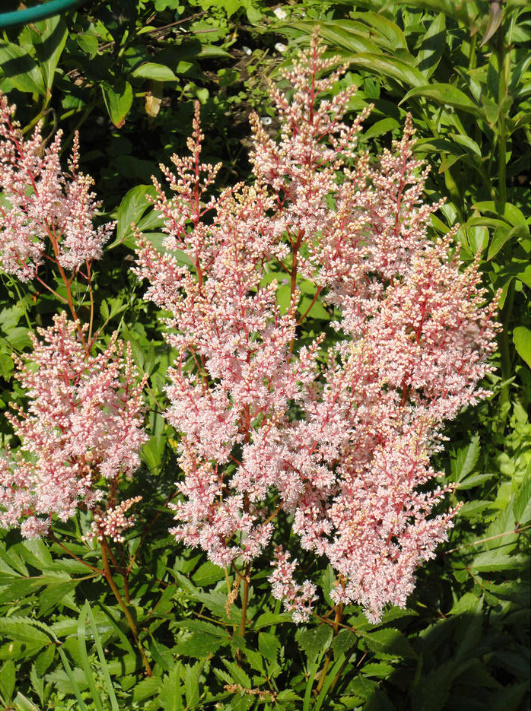
Astilbes of the Thunberg Group
There are not so many varieties in this group, I will give the most notable ones. First of all — ‘Straussenfeder’, which during flowering really resembles pink ostrich feathers.
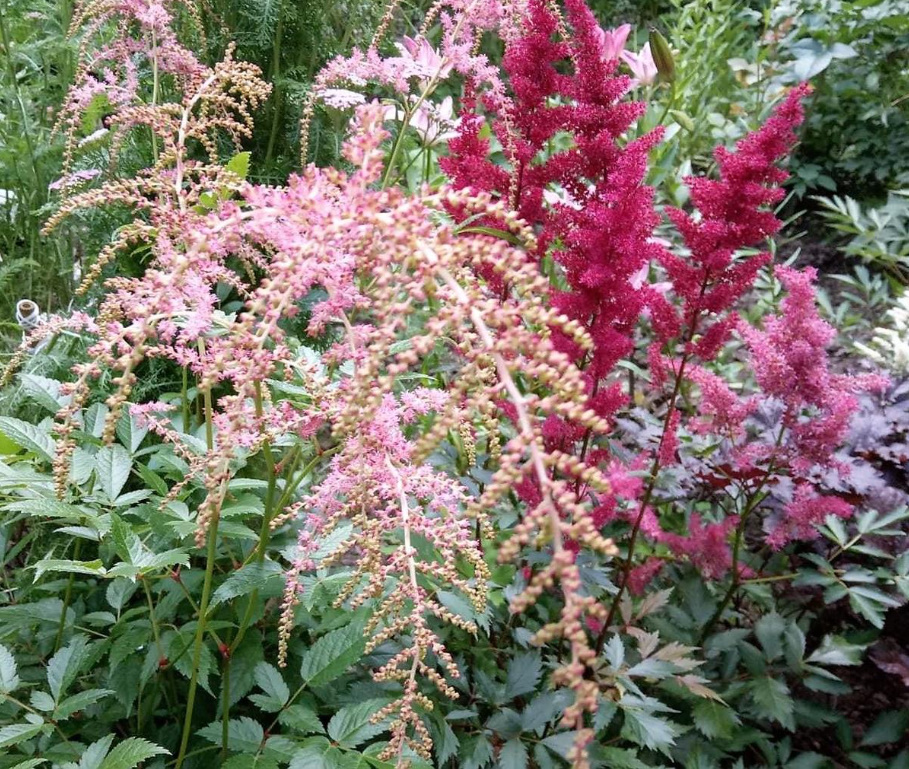
‘Professor van der Wielen’ is of Dutch origin with white drooping light and delicate inflorescences and a relatively new variety ‘Red Charm’ with bright pink picturesquely hanging inflorescences of ampel shape.
Among the novelties from the Thunberg group directly from the Japanese selection ‘Chocolate Shogun’ is an amazing creation of breeders, winner of the Plantarium 2013 exhibition. This low (50-60 cm) astilbe has the main value — dark chocolate leaves that contrast with delicate creamy pink inflorescences.
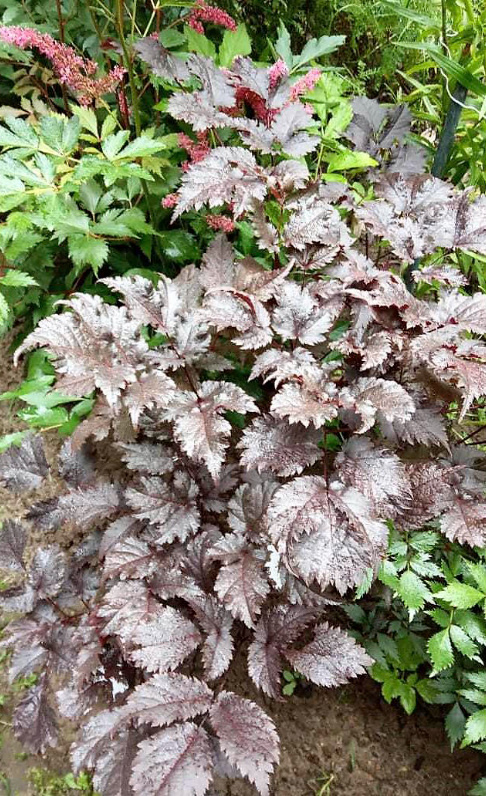
Astilbe chinensis hybrids
All varieties of this group bloom later than astilbes from the Arends group and, as a rule, differ in lower height (up to 40 cm) and thicker inflorescences. The bushes are sturdy, give a lot of peduncles and are famous for the fluffiness of their panicles.

There is a whole series of Chinese hybrids under the common name Vision: white ‘Vision in White’, red-purple ‘Vision in Red’, intense carmine-pink ‘Vision in Pink’ and, in fact, ‘Vision’ with purple inflorescences. All are up to 60 cm tall, have juicy green openwork foliage. The old variety ‘Veronika Klose’ is interesting, its height is 40-60 cm, the peduncles are decorated with pink-purple plumes.
Modern hybrids of Dutch origin
In the Netherlands in 2010, a whole series of hybrids under the common name Younique was presented, obtained on the basis of Astilbe chinensis: ‘Younique Carmine’, ‘Younique Lilac’, ‘Younique Salmon’, ‘Younique Silvery Pink’, ‘Younique White’. The names correspond to the color — carmine, purple, salmon, pink or white. All of them are characterized by low growth (up to 40 cm), bloom luxuriantly and for a long time, but somewhat later than the astilb of the Arends group.
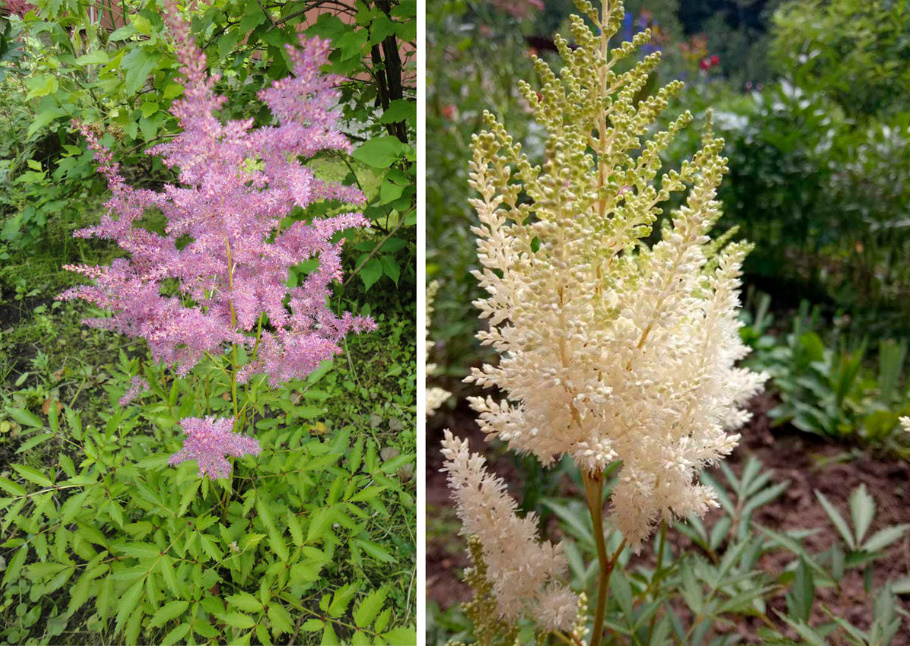
Among the notable novelties is the Japanese variety ‘Cappuccino’, white—cream, like whipped cream, with brown peduncles.

Also not left without attention:
- ‘Black Pearls’ — dark leaves and rich purple flowers. Large buds really resemble black pearls;
- ‘Mighty Chocolate Cherry’ — the height of the peduncles reaches 120 cm, the leaves are dark brown, the panicles are bright cherry color. This variety received a gold medal at the international Plantarium 2016 exhibition.

The absolutely amazing variety ‘Color Flash’ stands apart. Its main distinguishing feature is bright burgundy leaves. Towards the end of the season, they acquire fiery red smears – this variety can not be confused with anything!
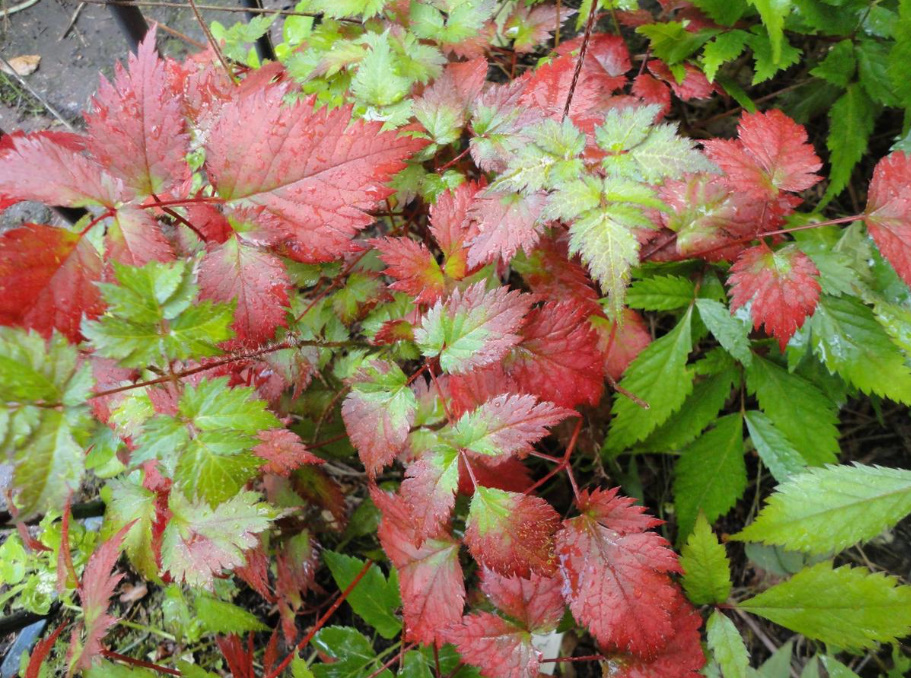
Astilbe is very plastic. She will find a place in any garden — and certainly not in its backyard. Combining different varieties, you can achieve amazing results. If you have unidentified astilbes growing in your garden, play the Guessing game: try to identify at least the groups to which they belong — Arends, Thunberg, Chinese or Japanese hybrids based on typical features.




Leave a Reply